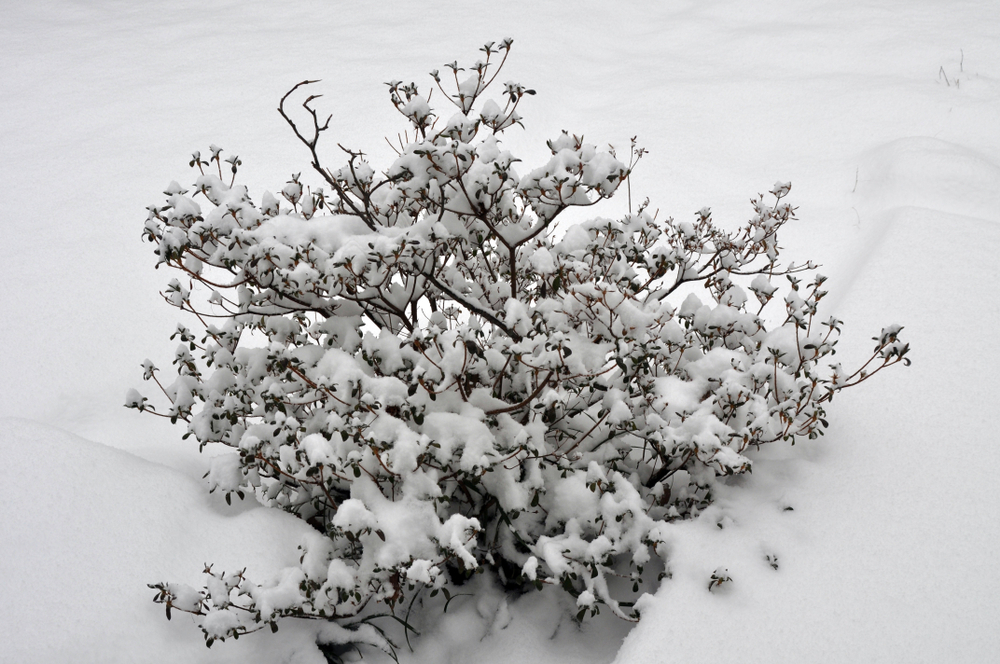Your Guide to Winterize Your Landscaping

Winterizing your landscaping is crucial for the health and longevity of your plants and the overall appeal of your property.
In this guide from Omnia360, we’ll share the steps to ensure your landscaping thrives despite the cold temperatures.
Pruning and Trimming
One of the first tasks in winterizing your landscaping is to prune and trim your plants and trees. Remove any dead or diseased branches. They are more susceptible to breakage under the weight of snow and ice. Proper pruning promotes healthier growth in the spring and reduces the risk of winter damage.
Omnia360 recommends scheduling pruning sessions in late fall or early winter to allow plants to enter dormancy without the stress of recent cuts.
Mulching for Insulation
A layer of mulch around the base of trees, shrubs, and perennial plants provides insulation and protection during winter. Mulch helps regulate soil temperature, preventing extreme fluctuations that can harm roots. A 2-4 inch layer of organic mulch, such as bark or compost, is ideal for retaining moisture and providing a buffer against freezing temperatures.
Related Post: Commercial Landscape Maintenance Guide
We want to emphasize the importance of keeping mulch a few inches away from the base of trees and plants to prevent rot and discourage pests.
Watering, Hydration, and Sprinkler Systems
Hydration is crucial for plant survival during winter, especially evergreens that continue to lose moisture through their leaves. Before the ground freezes, ensure your landscaping receives a thorough watering. Well-hydrated plants are better equipped to withstand winter stress and are more resilient to freezing temperatures.
Pay attention to the moisture levels throughout the winter, providing supplemental water during dry spells when the ground is not frozen.
Winterizing a Commercial Sprinkler System
This step is crucial to protect your system from freezing temperatures, which can lead to costly damage.
Follow these steps to winterize your commercial sprinkler system:
Shut Off the Water Supply
Locate the main shut-off valve for your sprinkler system and turn it off. This valve is usually in a heated area like a utility room or basement.
Drain the System
After turning off the water supply, drain the water from the sprinkler system. Open all the drain valves and low-point drains, allowing water to flow out. Ensure that water is completely drained from the mainline, lateral lines, and all the sprinkler heads.
Open Drain Valves
Open all the drain valves and test cocks on backflow preventers. This step is crucial for preventing water from freezing inside the components.
Use Compressed Air
Connect an air compressor to the system using a proper fitting. Gradually increase the air pressure, starting from the furthest sprinkler head from the compressor. Blow out each zone separately until no water comes out of the heads. Repeat this process for each zone in the system.
Check Pressure
Monitor the air pressure during the blowout process, ensuring it stays within the recommended range for your sprinkler system. Excessive pressure can damage the system.
Inspect and Clean Sprinkler Heads
While the system is depressurized, inspect and clean all sprinkler heads. Remove any dirt, debris, or mineral buildup that may affect the system’s performance.
Protect Backflow Preventer
Wrap the backflow preventer with insulation or a thermal blanket to shield it from extreme temperatures. This is especially important as backflow preventers are sensitive to freezing conditions.
Store or Protect Components
Remove and store above-ground components, such as backflow preventers and controllers. If removal is not possible, consider insulating these parts.
Clearly label shut-off valves, backflow preventers, and other critical components. This documentation will be helpful during the spring start-up.
Monitor Weather Conditions
If unseasonably cold weather is predicted, take additional precautions, such as adding insulation or scheduling an extra blowout.
If you’re unsure about any aspect of the process or lack the necessary equipment, contact the team at Omnia360 for a thorough winterization process.
Protecting Vulnerable Plants
Some plants, especially newly planted or tender varieties, are more susceptible to winter damage.
Protective coverings such as burlap wraps or frost blankets provide insulation while allowing air circulation, preventing heat buildup, and reducing the risk of diseases. Remove the covers during milder days to allow the plants access to sunlight and fresh air.
Snow and Ice Removal
Heavy snow can lead to bent or broken branches, especially on evergreens. Safely remove excess snow from branches using a broom to prevent damage.
Related Post: What are ‘Hard’ and ‘Soft’ Facility Management Services?
Ice accumulation is another concern, weighing down branches and causing breakage. We advise against using salt-based de-icers near plants, which can harm the soil and roots. Environmentally friendly alternatives such as sand or calcium magnesium acetate can improve traction on icy surfaces.
When to Call in the Professionals
Winterizing landscapes may be efficiently addressed by outsourcing to a facility management company.
Related Post: Why Your Landscaping Business Needs Facility Management
One of the primary challenges businesses face is a lack of expertise in crafting a tailored winterization plan. Omnia360 brings in professionals who can conduct thorough assessments, ensuring a customized winterization strategy.
Our team possesses the right tools and equipment for the job and prioritizes safety. We’ll address concerns about handling potentially hazardous tasks during winterization.
Additionally, businesses deal with time constraints, making finding the necessary hours for comprehensive winterization challenging. By outsourcing this work, companies can focus on priority work without compromising their landscaping.
Contact Omnia360 Facility Solutions for Landscape Maintenance
Winterizing your landscaping is an investment in the long-term health of your property. Contact us at (833) 360-6642. The team at Omnia360 provides around-the-clock, comprehensive services that work with your in-house team.